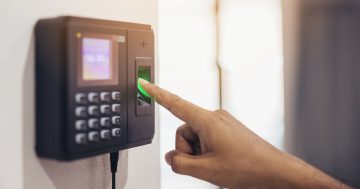Brian Krenke* says workers are real people, not robots, and physical workplaces should reflect this, by allowing them input into office design.

Photo: Toa Heftiba
You don’t have to be a management guru to know that organisations perform better when employees and managers trust one other.
The data back up this seemingly obvious intuition — and then some.
Metrics on trust make up two-thirds of the criteria Fortune magazine uses in its list of the “100 Best Companies to Work For.”
Those organisations post average annual returns that are triple those of the S&P 500.
Of course, there are plenty of ways to foster trust at work, but one strategy that’s often overlooked is thoughtful workplace design.
Office layouts that build trust give employees control over their workspaces — and allow them to dictate how and where they’ll do their best work.
Yet, despite this obvious observation, the existing workplace status quo is one of extremes.
All too often, people end up isolated in cubicle farms or drowned out in the din of an open office.
It doesn’t have to be that way: Research from architectural firm Gensler showed that it doesn’t matter whether a workplace is open or closed; an office will boost productivity if it’s designed to meet employees’ specific needs.
Here is a list describing some of those needs:
- Privacy:
Give employees some, even if that doesn’t involve a corner office.
Consider the need for privacy.
No one wants to disturb a roomful of colleagues with a loud phone call — or meet with a client in front of an audience.
It’s not feasible to give every employee a private office.
But managers can find a happy medium for employees seeking privacy.
Some organisations are doing this by reviving a relic of the past — a “phone booth” of sorts.
Microsoft, for example, recently scattered soundproof glass-panelled rooms throughout its Seattle headquarters.
Workers use them to complete all sorts of tasks that require concentration and quiet, from client phone calls to writing code.
These phone booths are popular among workers because they add privacy and minimise self-consciousness.
But they also let managers show that they trust their team to stay on task, no matter where they’re working.
- Feeling “at home”:
Make employees feel that way, even while at work.
Other employers are signalling their trust in their workers by making them feel more at home.
Airbnb executives modelled their headquarters after real apartments listed on its website.
The company encourages employees to do their work everywhere from an inviting living room sofa to a bustling kitchen counter, depending on the nature of their tasks.
- Taking the lead:
Let employees take the lead on workplace design.
Employers can further use design to signal the trust they have in their workers by empowering those workers to create their own workspaces.
That doesn’t mean arming everyone in the office with a paint roller and sledgehammer.
But an element as seemingly small as furniture can give employees that feeling of freedom and control.
Forward-thinking employers are doing just that.
Before designing its new Milwaukee headquarters, our client Northwestern Mutual interviewed its employees and found they wanted workspaces they could move and control.
Our team at KI engineered the resulting system, called Tattoo.
Rather than picking up their belongings and moving to a conference room, Northwestern Mutual employees can now roll desks together for an impromptu team meeting.
One team member might slide over a moveable wall and use it as a whiteboard for a brainstorming session.
Northwestern Mutual executive Cal Schattschneider said the new design allows “people to work their best, wherever that may be.”
- You care:
Show employees you care about their interests outside of work.
Flexible furniture pieces with multiple uses can also communicate to employees that their employers care about their lives outside the office.
Consider a stool that doubles as a storage locker.
It makes an impromptu conversation easier — and gives a worker somewhere to stash their gym bag so they can get to yoga class on time.
By letting employees take charge of their environment, executives do more than build trust and community.
They save money, too.
Employers tend to like open offices in part because they appear less expensive; one room has the space for a lot of people.
But when teams can rearrange their workspaces on the fly, employers don’t have to call facilities or foot the bill for a massive renovation, which can quickly add up to hundreds of thousands, if not millions, of dollars.
The overall message here?
Workers are real people, not robots.
They have specific, human needs.
By designing physical workspaces that allow the human beings who occupy them to dictate their layout, managers can show they truly understand their employees — and forge trust and community in the process.
* Brian Krenke is CEO of global furniture manufacturer KI.
This article first appeared at www.entrepreneur.com.











